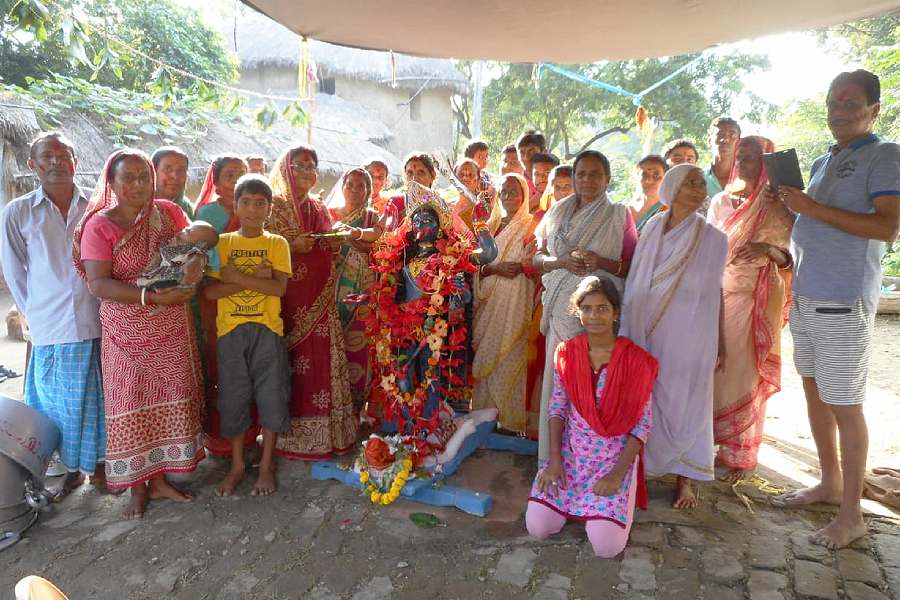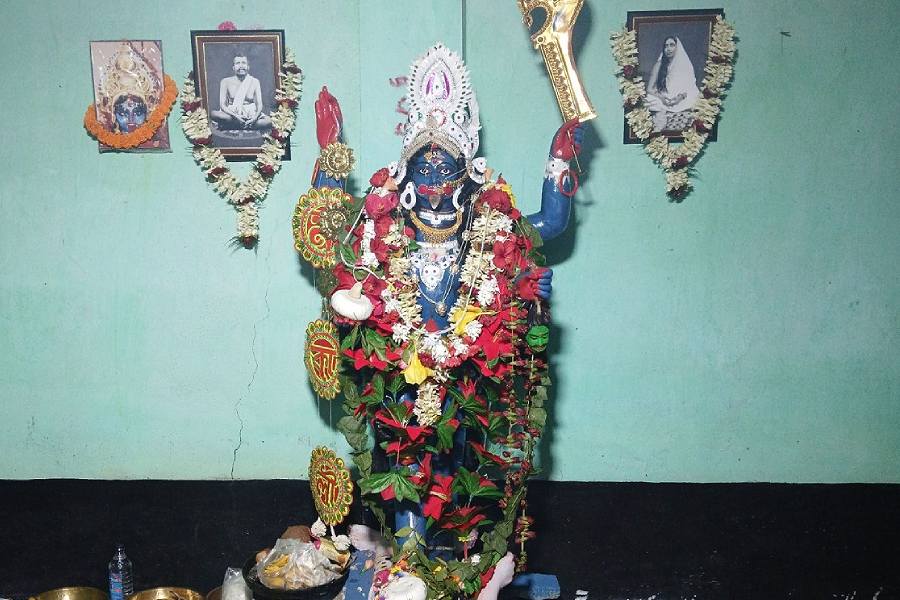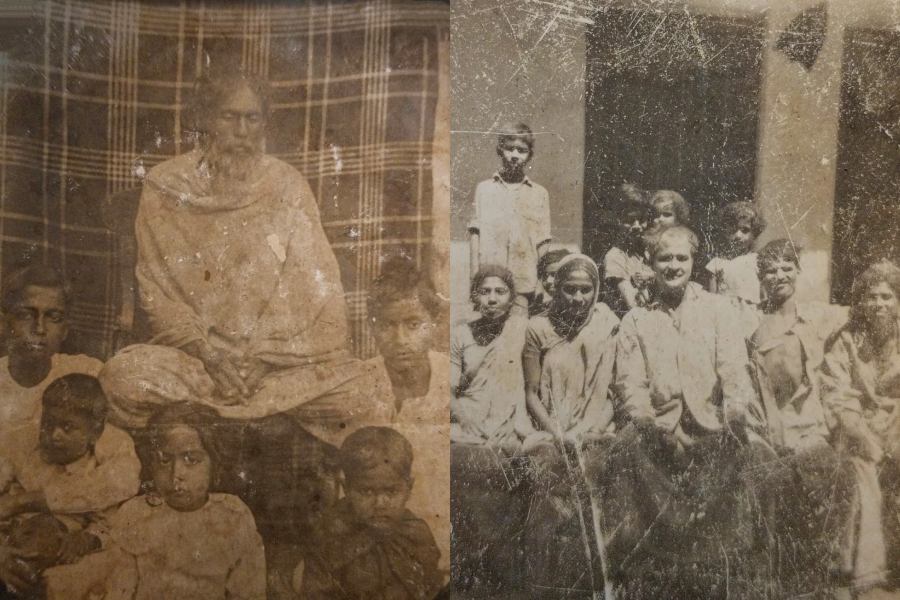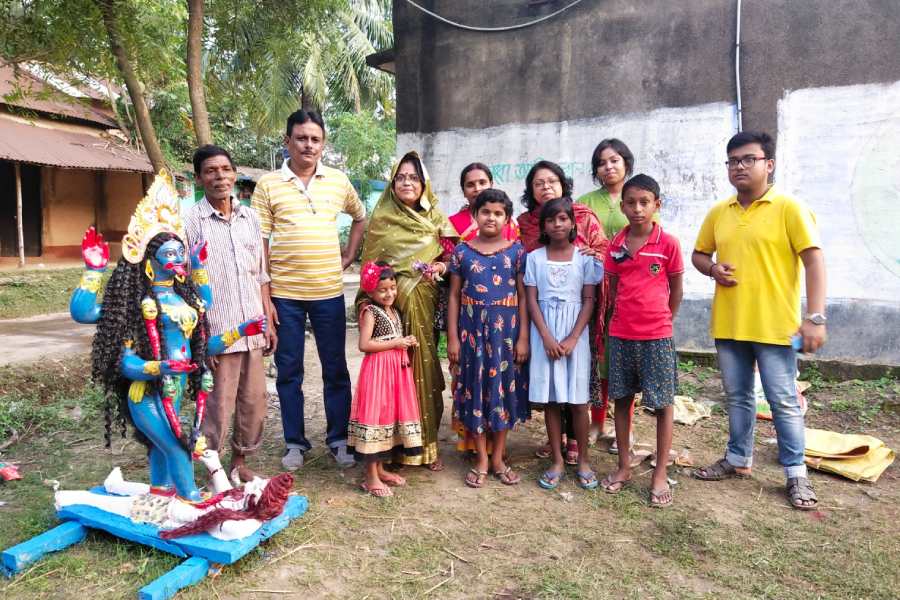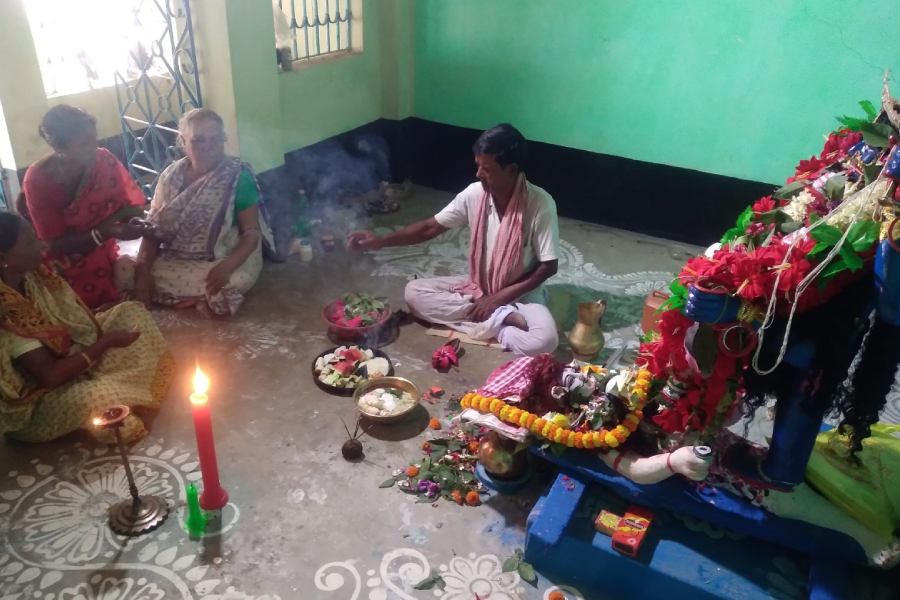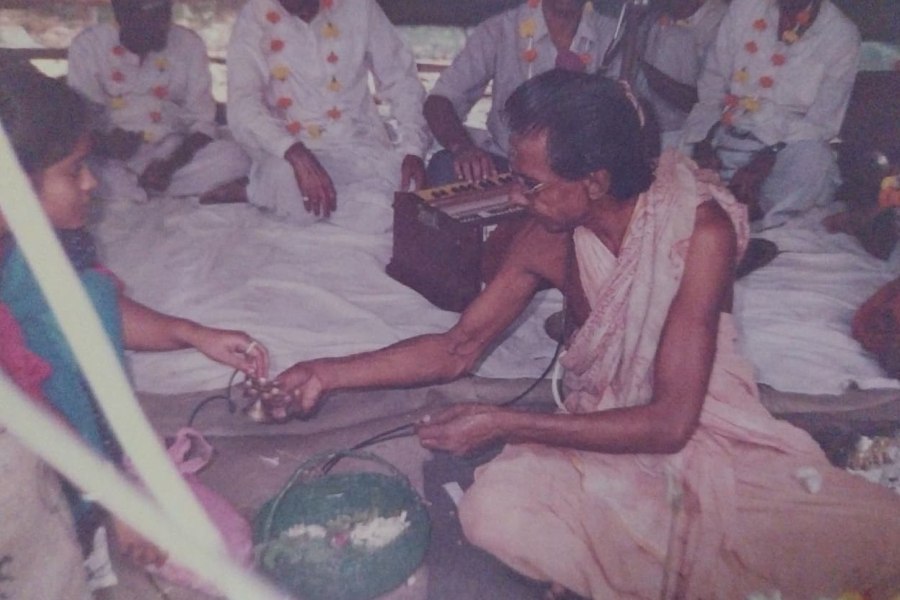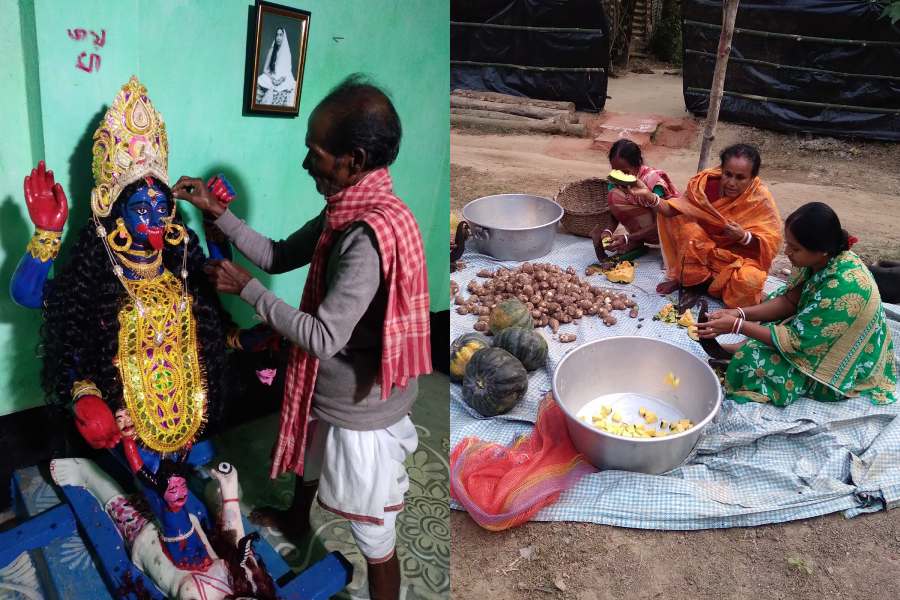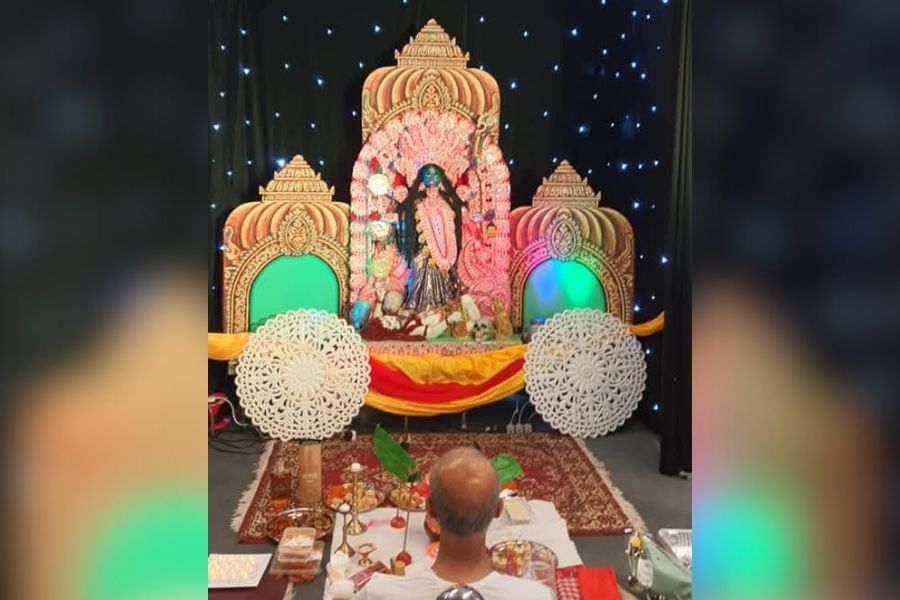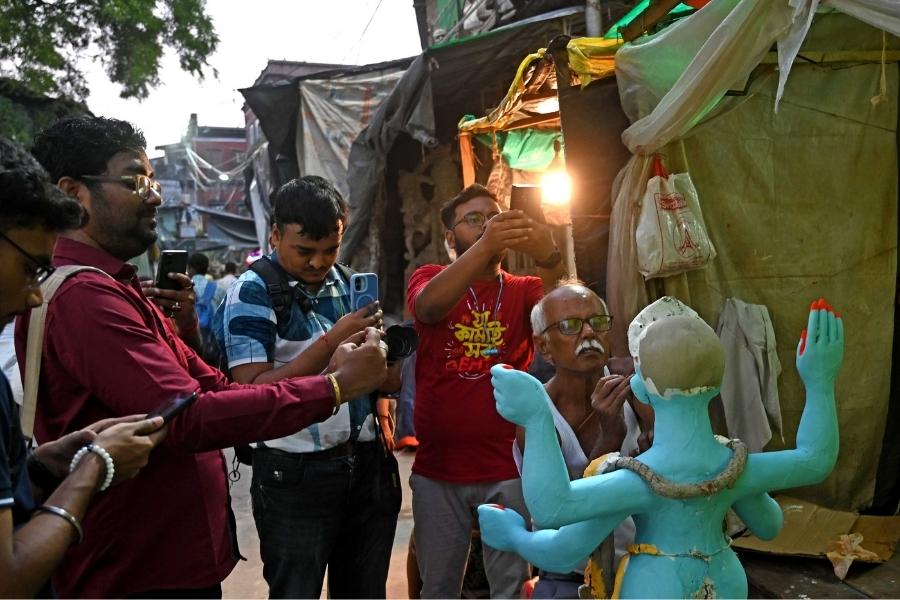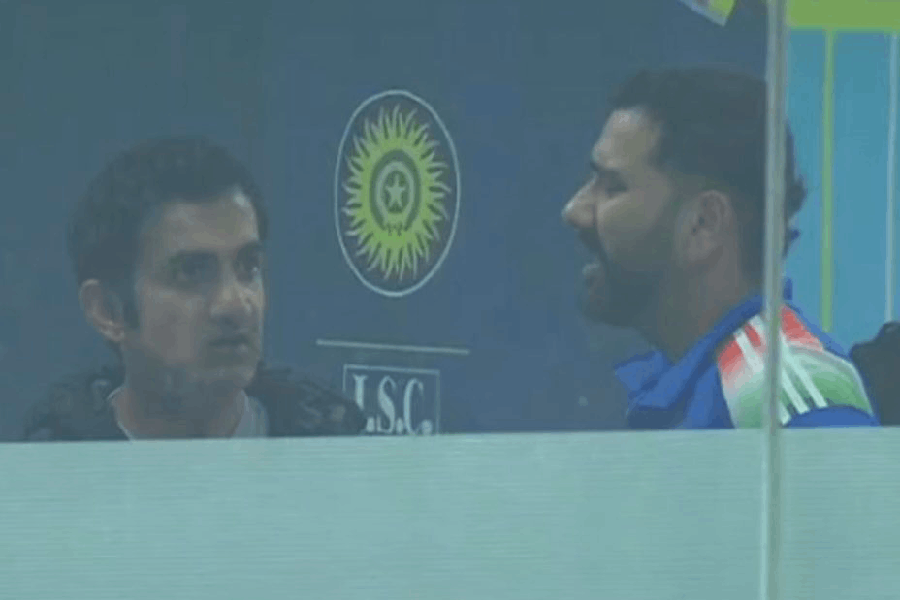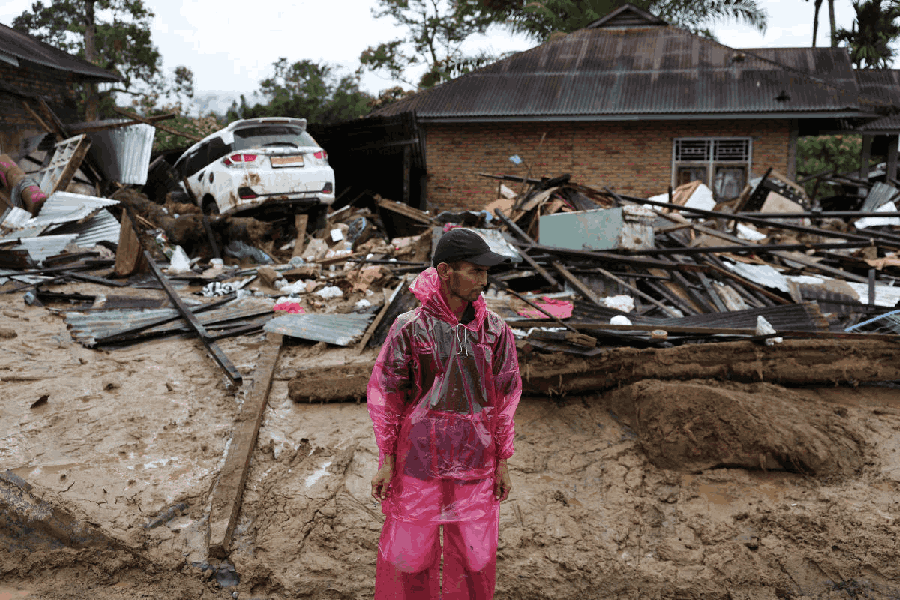Every barir pujo carries with it a legacy — a story whispered through generations — held together by faith, memory and time. Some of these traditions might appear unusual to an outsider, yet, within the family, they are followed with an unbroken sense of devotion. Far from the hustle and bustle of Kolkata, in the serene village of Kurumba in Ausgram, Burdwan, the Mukherjee family continues a Kali Pujo that has become more than just an annual ritual — it is a living reminder of heritage, togetherness, and quiet resilience.
The puja dates back to the late 1700s, when Benimadhab Mukherjee, a wealthy landowner from East Burdwan, decided to worship Goddess Kali and organise a grand festivity — all in a day’s decision — after his wife, Makkhoda Devi, was denied the opportunity to offer her prayers at a nearby Kali Puja.
However, the puja was later shifted to Kurumba, a nearby village, by Benimadhab’s son, Makhonlal Mukherjee. At the age of 12, Makhonlal ran away from home and reached Muluti in Tarapith, where he met and befriended the renowned sadhak (saint) and Kali devotee, Bamakhyapa.
The two practised tantrism for several years, after which Bama urged Makhonlal to return to his family. Around the late 1800s, Makhonlal shifted his family’s puja to Kurumba village, where it continues to this day.
Debashish Mukherjee, a member and organiser of the Mukherjee family’s Kali Puja, said that in Kurumba, the puja is locally known as Sadhaker Kali Puja, named after his forefather Makhonlal.
The puja, which is performed in tantric traditions, later prospered during the time of Debashish’s grandfather, Narayan Mukherjee.
“We are against sacrificing animals for our puja. Even today, we only offer chalkumra (ash gourd) as a part of the ritual. Also, we offer khichuri, fried vegetables and a chutney made of rohu and katla fish to our Devi as bhog,” Debashish, who lives in Howrah, told My Kolkata.
One of the most intriguing and unusual rituals of the Mukherjee family’s Kali Puja is the offering of Shiba Bhog.
Unlike the usual offerings, this bhog is first taken to the shamshan (cremation grounds) after the completion of Puja, which generally happens around three in the morning, and it is laid out for the shibas — scavengers such as foxes and wild dogs, believed to be the attendants of the goddess.
It is said that if the shibas partake in the food, the offering is accepted by the divine. The remnants of the bhog, along with karon — a locally brewed liquor also offered at the site — are then brought back to the household.
“These leftovers are reverently consumed by the family and devotees as Maha Prasad, marking a symbolic union between the mortal and the mystical,” said Debarati Mukherjee, daughter of Debashis Mukherjee.
Until 1977, the idol of Kali was built on the same kathamo (straw structure). It broke in 1978 during a flood when it was tied on the banks of the Kunnur river near the shamshan.
A new kathamo was built, with the remains of the old one, which is still in use today. The idol is generally immersed a day after Amavasya, and a few days later, the effigy is brought back home and placed in the Chanditala, the designated spot where Kali is worshipped in the Mukherjee household.
Debojyoti Mukherjee, who is the sixth generation of the Mukherjee family of Kurumba, said that they perform another Puja — Ashtamangala, after eight days of Kali Puja.
“This puja represents a sacred, auspicious ritual, usually performed eight days after a wedding or coronation, to bring prosperity. We perform it on the kathamo of our Kali devi in Chanditala,” said Debojyoti.
Interestingly, though the Sadhaker Kali Puja remains a family ritual for the Mukherjees, it has long transcended the courtyards of their ancestral home, becoming a celebration shared by the entire village.
From preparing bhog for every household to carrying the idol on their shoulders to the Mukherjee bari, and even adorning the goddess with gold ornaments, the villagers play an inseparable role in the festivities.
“We can never imagine carrying out our Kali Puja without the involvement of our neighbours. As much as it is ours, it belongs to them as well,” said Tapati Mukherjee, wife of Debashis Mukherjee, her voice echoing the deep bond between devotion and community that keeps this centuries-old tradition alive.
